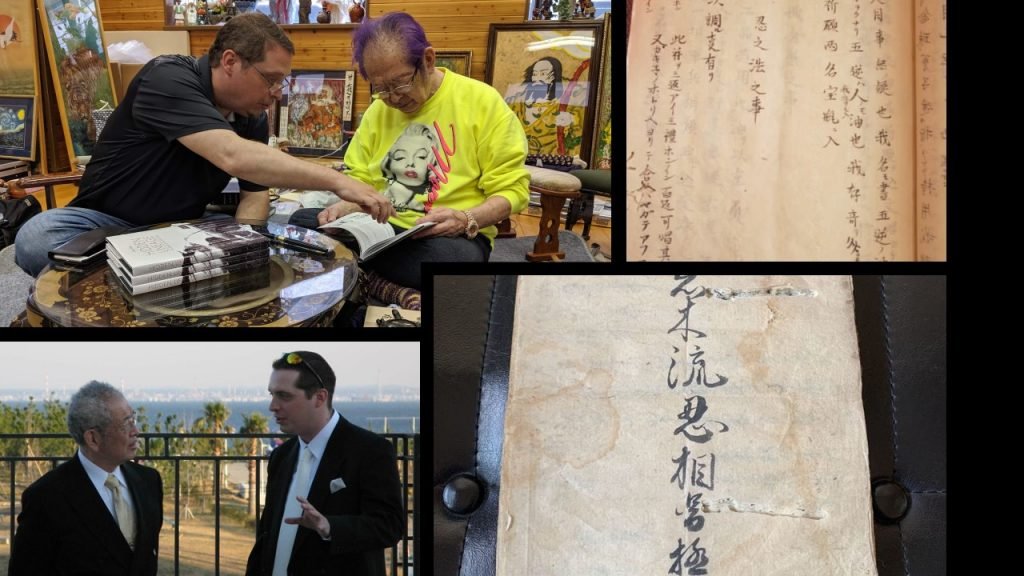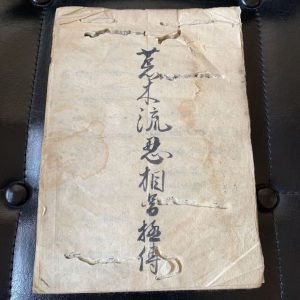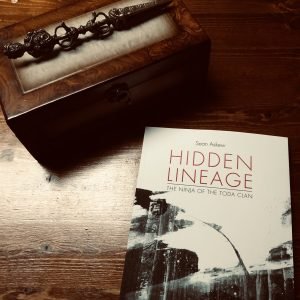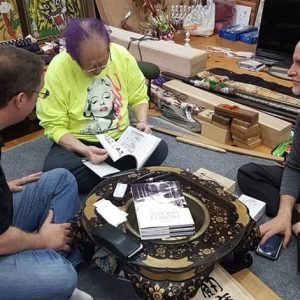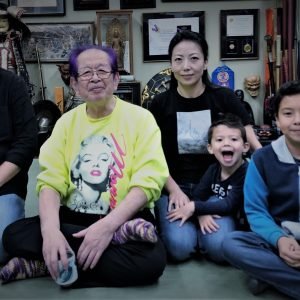During my 15 years of living and training in Japan I was blessed with many occasions to chat with Hatsumi Soke regarding his thoughts on ninjutsu and the martial arts. But, when writing the Hidden Lineage, I often had many questions and doubts regarding the newer research I had done and would communicate these concerns to him.
Hoping to get a better understanding of our art, each time I visited his home to review the progress of the book, I would ask my questions. He was always patient and was never condescending.
Today, I would like to share here some of the points that he discussed with me during those times. Some conversations I recorded on my phone while chatting in his office, some were via the regular postal system, and some I just simply took notes while he spoke.
Lately there has been a lot of controversy in the ninjutsu enthusiast community as to what is and what is not real ninpo or ninjutsu. Even the definition of the term ninja has come into hot debate.
So here I would like to expand upon what Soke has taught me in regard to these things. Please keep in mind these are simply my interpretations of what was explained to me. I do not want to claim that my, or even Soke’s, opinion is the final say on the topic. But as the last authentic grandmaster of a ninjutsu tradition I hold his opinions and thoughts in the highest regards.
First, when it comes to the history of ninjutsu, we may be facing an endless abyss and never know the exact true origins. The reason for this, as is explained in the writings of Takamatsu on the Togakure Ryu, is that it depends on the time period that is being discussed. For example, ninjutsu in the times of Shotoku Taishi was very different from the ninjutsu during the golden age of Iga and Koka. Even later in the warring states period and finally the Edo period…each had a different concept of what ninjutsu or ninpo is. Location was a major factor too. In other words, depending on time and place ninjutsu and ninpo can be very different. Iga and Koka did not have a monopoly on ninjutsu and were not necessarily the most effective.
All provinces and domains had their secret services, often called Onmitsu 隠密, Kurohabaki 黒脛巾, Rappa 乱破, Suppa 水破/出抜, Toppa 透破/突破, Dakkou 奪口, Shinobi 竊盗, etc. But if we were to go into the detailed differences of these different types of ninjutsu-tsukai 忍術使いor “ninjutsu-users” it would become a huge book in and of itself. But make no mistake, all these types used ninjutsu and ninpo. Later, when the 20th century came, the newly created term “ninja” came to represent all of these types under one name. Simplification.
Depending on the particular warrior’s character and natural abilities, his ninjutsu will vary. But the three key points that remain unchanged throughout the ages are:
To hide yourself 身を潜め
Quiet your mind 心を鎮め
Conceal your knowledge or awareness 識を忍ぶ
These are the 3 keystones to the foundation of ninjutsu during any time and at any place. On top of these 3 points lies the ability to change and variate, or “henka” 変化.
Hatsumi Soke teaches that in the martial arts this ability to change directly corresponds to the art of “kyojitsu-tenkan” 虚実転換, or the ability to manipulate truth and false, simply said the art of deception. He even states that within the densho writings and kuden of ninjutsu there are many intentional falsities. Therefore, there must be a direct transmission between master and student, or the scrolls are useless.
His main point in these conversations was that there is no fixed definition for ninjutsu that says, “this is how ninjutsu should be done” or “this is what ninjutsu is”. When it becomes fixed, you forget that this art is simply an art of deception.
Again, this is simply Soke’s perspective that I have taken in to become my own. Historians and researchers may have a different concept from us practitioners of ninpo/budo taijutsu and they may use unchanging formal definitions, but then, in my opinion, ninjutsu and ninpo becomes a thing of the past, a relic, and something that is no longer alive.
I hope you enjoyed this little essay. Stay healthy and safe everyone!
Ninpo Ichizoku!
Sean Askew – 導冬 Dōtō
Bujinkan Kokusai Renkoumyo
September 8, 2020

